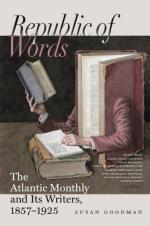The self-control of these men did not desert them at their execution. When the six leaders suffered death, the report says, Peter Poyas repeated his charge of secrecy. “Do not open your lips; die silent, as you shall see me do”; and all obeyed. And though afterwards, as the particulars of the plot became better known, there was less inducement to conceal, yet every one of the thirty-five seems to have met his fate bravely, except the conjurer. Governor Bennett, in his letter, expresses much dissatisfaction at the small amount learned from the participators. “to the last hour of the existence of several who appeared to be conspicuous actors in the drama, they were pressingly importuned to make farther confessions,”—this “importuning” being more clearly defined in a letter of Mr. Ferguson, owner of two of the slaves, as “having them severely corrected.” Yet so little was obtained, that the Governor was compelled to admit at last that the really essential features of the plot were not known to any of the informers.
It is to be remembered that the plot failed because a man unauthorized and incompetent, William Paul, undertook to make enlistments on his own account. He blundered on one of precisely that class of men—favored house-servants—whom his leaders had expressly reserved for more skilful manipulations. He being thus detected, one would have supposed that the discovery of many accomplices would at once have followed.
The number enlisted was counted by thousands; yet for twenty-nine days after the first treachery, and during twenty days of official examination, only fifteen of the conspirators were ferreted out. Meanwhile the informers’ names had to be concealed with the utmost secrecy,—they were in peril of their lives from the slaves,—William Paul scarcely dared to go beyond the door-step,—and the names of important witnesses examined in June were still suppressed in the official report published in October. That a conspiracy on so large a scale should have existed in embryo during four years, and in an active form for several months, and yet have been so well managed, that, after actual betrayal, the authorities were again thrown off their guard and the plot nearly brought to a head again,—this certainly shows extraordinary ability in the leaders, and a talent for concerted action on the part of slaves generally with which they have hardly been credited.
And it is also to be noted, that the range of the conspiracy extended far beyond Charleston. It was proved that Frank, slave of Mr. Ferguson, living nearly forty miles from the city, had boasted of having enlisted four plantations in his immediate neighborhood. It was in evidence that the insurgents “were trying all round the country, from Georgetown and Santee round about to Combahee, to get people”; and after the trials, it was satisfactorily established that Vesey “had been in the country as far north as South Santee, and southwardly as far as the Euhaws, which is between seventy and eighty miles from the city.” Mr. Ferguson himself testified that the good order of any gang was no evidence of their ignorance of the plot, since the behavior of his own initiated slaves had been unexceptionable, in accordance with Vesey’s directions.




